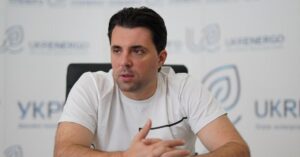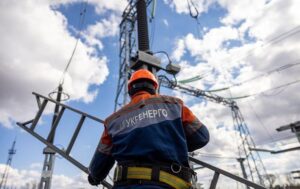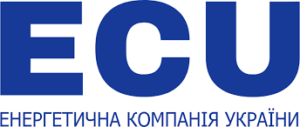
A meeting of the supervisory board of NEC Ukrenergo, at which a vote is scheduled for the removal of the head of the company’s management board, Volodymyr Kudrytskyy, is scheduled for Monday, a source familiar with the situation said.
‘The meeting of the National Council is scheduled for Monday. Most likely, the withdrawal will take place. Given that the nabsoviet has six members instead of seven: three independents and three representatives of the state, and Roman Pionkowski rather supports the initiator of the withdrawal – the main shareholder represented by the Ministry of Energy’, – said the interlocutor of the agency “Interfax-Ukraine” on Saturday morning.
At the same time, he expressed hope that the public outcry, particularly in the energy community, which the possibility of Kudrytsky’s dismissal has caused, as well as the great support of his Western partners will help stop the process.
‘If it fails, I hope that it will at least be possible to put a professional acting and announce a full-fledged competition for the head of the board,’ the source added.
The company itself has not commented on the issue.
According to TG-channel Monopolist, for the position of the head of Ukrenergo are considered Dmytro Olefir, the head of the Board of Market Operator, who worked in Ukrenergo and was also a member of its Board from the state, Oleg Kozachuk, recently dismissed from the position of Khmelnytskyoblenergo, Oleksandr Gavva, the head of the Board of Market Operator, Artem Nekrasov, the head of the SE ‘Guaranteed Buyer’.
Kudrytskyy has already been publicly supported in his social networks by, among others, MP Andriy Zhupanin (Servant of the People), energy expert of the Ukrainian Institute of the Future Andrian Prokip, managing partner of the consulting company Imepower, which works, among other things, in the market of ‘green’ energy, and a member of the board of the European-Ukrainian Energy Agency Yuriy Kubrushko, head of the Bioenergy Association Georgiy Geletukha, as well as a number of other representatives of the energy industry.
As reported, Forbes Ukraine, citing its own sources, reported that Ukrainian President Volodymyr Zelensky at a meeting of the Supreme Commander-in-Chief’s Headquarters on Friday, 30 August, voiced a demand to Kudrytskyy to write a letter of resignation at his own request in the near future, but he refused. Now the decision on his resignation should be made by the company’s nabsoviet board. The reason for the resignation request is called incomplete protective structures around the system operator’s substations, which allegedly led to disruptions in electricity supplies after the combined massive shelling on 26 August.
The director of the Energy Research Centre, Oleksandr Kharchenko, said in a commentary to the publication that the accusations against Kudrytskyy were groundless, adding that Enerhoatom and Ukrhydroenerho were experiencing similar problems. He also pointed out that if the company’s naibsoviet board decides to dismiss the head of Ukrenerho, ‘the independence of supervisory boards in Ukrainian state-owned companies can be forgotten’.
‘Ukrenergo is a private joint-stock company, 100 per cent of whose shares are managed by the Ukrainian Energy Ministry.
‘Ukrenergo’ recognised the Russian attack on energy facilities on 26 August as the most large-scale attack since the beginning of the war. The Russian occupiers fired 127 missiles and 109 attack drones at Ukrainian territory, of which 102 missiles and 99 UAVs were shot down. As Oleksiy Kucherenko, the first deputy chairman of the Verkhovna Rada committee on energy and housing and utilities, commented on the consequences of the attack, Ukraine’s unified energy system has maintained its integrity despite tangible defeats of some energy facilities.
On 23 April 2024, the Ministry of Economy of Ukraine announced a competitive selection for the position of an independent member of the Ukrenergo SB, but it is still operating with one vacancy, although according to Ukrenergo’s charter, it should consist of seven members, including four independent members.
Almost a year ago, Ukrayinska Pravda published the text of a US letter to the Ukrainian authorities with a list of reforms that Kiev should undertake to continue receiving military support, in particular, to introduce additional members to the nabs of Ukrenergo and Naftogaz in the next three months (which was done for NAK).
Currently, Ukrenergo’s SB consists of Peder Andreasen, Daniel Dobbeny, Roman Pionkowski – independent members, Yuriy Tokarsky, Oleksandr Baranyuk, and Yuriy Boyko – representatives of the state. The decision to dismiss the head of the board is made by a majority vote. The market noted that despite the desire of the main shareholder to get Kudrytskyy’s resignation, he managed to avoid it several times, thanks to the support of Ukraine’s international partners, as well as half of the nabsovet (of the state representatives, he is supported by Yuriy Boyko).
In September 2022, the G7 ambassadors to Ukraine had already expressed concern about the government’s interference in the management of the state-owned Gas Transit System Operator of Ukraine LLC and NEC Ukrenergo.
Since the beginning of the full-scale war, the total amount of international assistance (loans and grants) attracted by Ukrenergo totalled EUR1.5bn.

According to preliminary information, NPC Ukrenergo plans to impose electricity restrictions for the regions on Tuesday, August 27, followed by hourly blackouts throughout the day, DTEK reported on Telegram.
In particular, from 00:00 to 06:00, it is planned to apply three rounds of blackouts, from 06:00 to 11:00 – four, from 11:00 to 15:00 – three, from 15:00 to 21:00 – four, from 21:00 to 00:00 – three.
“There is a high probability of using light gray outage zones in the schedules,” the company said.

NPC Ukrenergo, together with Poland, is working to increase the technical capabilities and volumes of electricity supplies to Ukraine in autumn and winter, said Volodymyr Kudrytskyi, Chairman of the Board of the NPC.
“We continue to work not only on repairs and development of protection, but also on finding solutions to attract more electricity to Ukraine from Europe. In particular, we are actively working with the Polish side to increase the technical capabilities and volume of electricity supplies to Ukraine in the fall and winter. We are working on options to compensate for the deficit caused by Russian attacks,” he wrote on his Facebook page on Friday evening.
Kudrytsky noted that he would provide more details when agreements are reached.
He also emphasized that Ukrenergo has not imposed any restrictions on electricity consumption for almost a week now, as there is enough electricity in the system to meet all needs.
Also, according to him, the dispatch center does not plan to cut power this weekend. “This is an important relief for all Ukrainians, but I have to remind you that we have no right to relax: the damage to the power system is significant, and we still face challenges. The heat above 30 degrees may still return, and then the situation in the power system may change. Please follow our messages and those of your regional power distribution companies,” emphasized the CEO.

Volodymyr Kudrytskyi, Chairman of the Board of NPC Ukrenergo, links the statement to the National Anti-Corruption Bureau about his alleged criminal offense to the case of the company’s purchase of bulletproof vests at the beginning of Russia’s full-scale invasion of Ukraine.
“This is an old, dead case of bulletproof vests that the company purchased at the request of the National Guard in early March 2022. We found several hundred bulletproof vests of class 4 at a price of UAH 16.4 thousand including VAT. At that time, it was significantly lower than the prices at which others were buying,” Kudrytskyi said at a briefing at the Ukraine Media Center in Kyiv on Friday.
According to him, apart from Ukrenergo, there are no claims against anyone, and from time to time “nameless political analysts” revive the case: either by throwing it into the media space or by writing statements to have the NPC checked once again.
The company’s CEO added that he treats this as an attempt to create an information throw-in and believes that “the case has not had and will not have any prospects in law enforcement agencies or in courts.”
Kudrytskyi suggested that the reason for his discrediting as the head of the company may be the active involvement of Ukrenergo in international financing, which has exceeded EUR 1.5 billion since the beginning of the full-scale war.
“Alternatively, some people are not satisfied with the EUR 1.5 billion of financing we have attracted since the beginning of the war. Maybe there are other reasons. In my opinion, this is just white noise,” said the head of the system operator.
Answering Energoreforma’s question about the reaction of international partners to the information about a possible criminal offense, Kudrytskyi noted that there was none. “Western partners have not reacted in any way.
There is no need to make any judgments. Trust is determined not by words, but by facts, and our partners have entrusted us with EUR1.5 billion, which is several times or even ten times more than any other company,” he said.
At the same time, Kudrytskyi emphasized that each artificial media attack leads to additional difficulties in attracting much-needed additional financial resources for the power system.
“The people who do this pursue their own selfish interests and, most likely, corrupt interests, but ultimately harm the interests of the state,” summarized the CEO of Ukrenergo.
The High Anti-Corruption Court, by its ruling of July 17, 2024, ordered the authorized persons of the National Anti-Corruption Bureau of Ukraine to enter information about a criminal offense into the Unified Register of Pre-trial Investigations (URPI) at the request of the person indicated in the ruling as person No. 6, dated June 28, 2024. The ruling states that the applicant raised the issue of possible criminal offenses committed by the Chairman of the Board of NPC Ukrenergo. The court notes that such a statement must be entered into the URPTI within 24 hours of its submission.
As reported, on June 26, the Security Service and the National Anti-Corruption Bureau of Ukraine announced that they had exposed the head of one of the departments of NPC Ukrenergo, who is no longer employed by the company, for corruption during the purchase of bulletproof vests.
According to the investigation, this purchase resulted in budget losses of over UAH 10 million. The issue of choosing a measure of restraint against the suspect is being decided.
Since the beginning of the full-scale war, NPC Ukrenergo has attracted more than EUR 1.5 billion in international financing in the form of loans and grants, half of which was used to restore and reconstruct the grids. Another 24% was used to build passive protection, and 34% to maintain market liquidity. The largest amount of funding was provided by the European Bank for Reconstruction and Development (EBRD) – EUR670 million. Another EUR324 million was received with the support of the German state development bank KfW, EUR224 million – from the International Bank for Reconstruction and Development (IBRD) and EUR136 million – from the European Investment Bank (EIB). July 18 NPC Ukrenergo and KfW agree on a EUR100 million grant. July 23 The EIB Group announces that it plans to allocate EUR86 million to Ukrenergo for the construction of drone shelters.

A EUR100 million grant agreement has been signed by Volodymyr Kudrytskyi, Chairman of the Board of NPC Ukrenergo, and Lorenz Gessner, Head of the Representative Office of the German state development bank KfW in Ukraine, the company said.
According to its Telegram post on Friday, the signing took place in Kyiv on Thursday in the presence of Deputy Energy Minister Roman Andarak and members of the EU Delegation to Ukraine.
It is noted that the European Commission has authorized KfW to provide Ukrenergo with funds from the EU’s special budget program Ukraine Investment Facility and to ensure the financing and implementation of a number of priority energy projects.
These include the modernization of high-voltage substations in the western regions of Ukraine and the development of interconnectors connecting it to the power system of continental Europe, as well as the repair and restoration of equipment destroyed or damaged by Russian shelling at high-voltage substations, and the purchase and supply of new equipment.
In addition, part of the funds should be used to strengthen the physical protection of Ukrenergo’s substations.
NPC noted that this grant is the second phase of the target program “Reconstruction and Restoration of Ukraine’s Electricity Transmission Infrastructure”, as the company signed an agreement with KfW on the first phase of the program worth EUR 15 million at the Berlin Conference on the Restoration of Ukraine-2024 in June.
In total, since the beginning of the full-scale war, Ukrenergo has attracted EUR324 million with the support of KfW, and the total amount of international assistance attracted amounted to EUR1.5 billion, the NPC summarized.

State-owned energy trader Energy Company of Ukraine (ECU) has transferred UAH 100.4 million in dividends to the state budget of Ukraine based on the results of its operations in 2023.
In a press release on Monday, the company said that by doing so, it became the first company to make such payments among all enterprises managed by the State Property Fund (SPF) of Ukraine.
“Today, our primary focus is to ensure reliable supply of electricity to Ukrainian consumers in the face of energy shortages. To this end, we are increasing imports, developing cooperation with electricity producers, and launching new products and services. At the same time, our activities create new sources of revenue for the state in a very difficult period for the Ukrainian economy,” commented Vitaliy Butenko, CEO of ECU.
According to Vitaliy Koval, Head of the SPFU, ESU demonstrates how state assets can work and generate significant profits for the state, and the dividends paid by the company will be a significant contribution to the state budget, which, in particular, finances the Ukrainian Defense Forces.
The company noted that the amount of dividends paid by it in the first five months of commercial activity in 2022 amounted to UAH 27.1 million.
As reported, Energy Company of Ukraine JSC is a national energy trading company established in the summer of 2022 that carries out operations for the purchase, sale and supply of energy resources, in particular through import and export operations.
“The company is one of the top 5 traders in Ukraine in terms of electricity sales and founded the first state-owned balancing group of electricity market participants, currently the second largest in Ukraine. The company is 100% owned by the state.
In 2023, the net profit of the company amounted to UAH 148.9 million, which is more than four times higher than in 2022, and contributions to the state budget amounted to UAH 209.4 million.